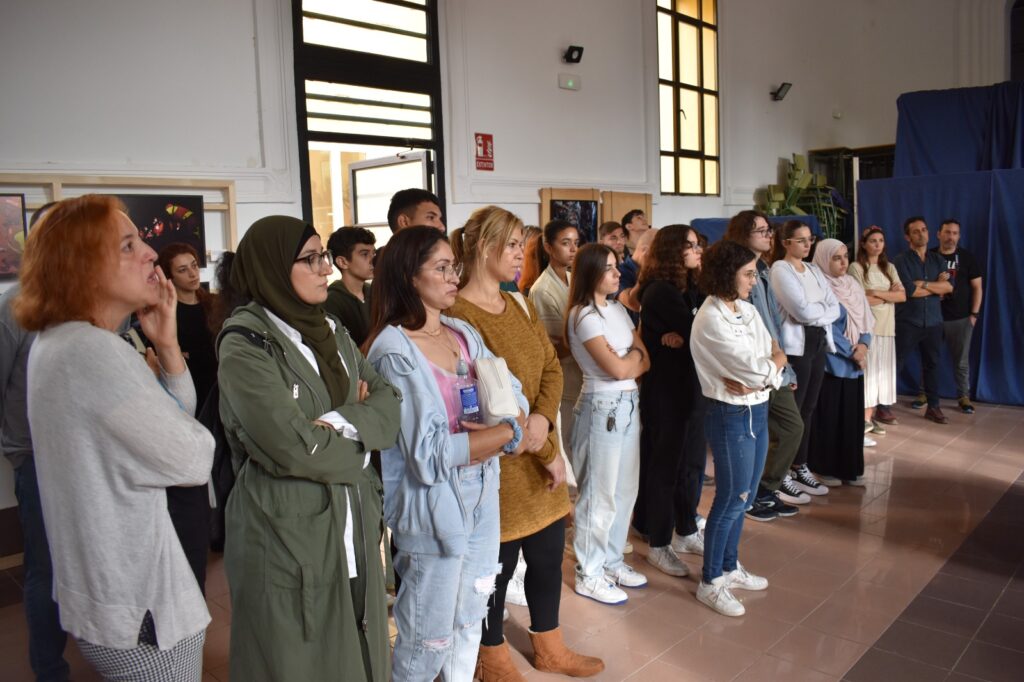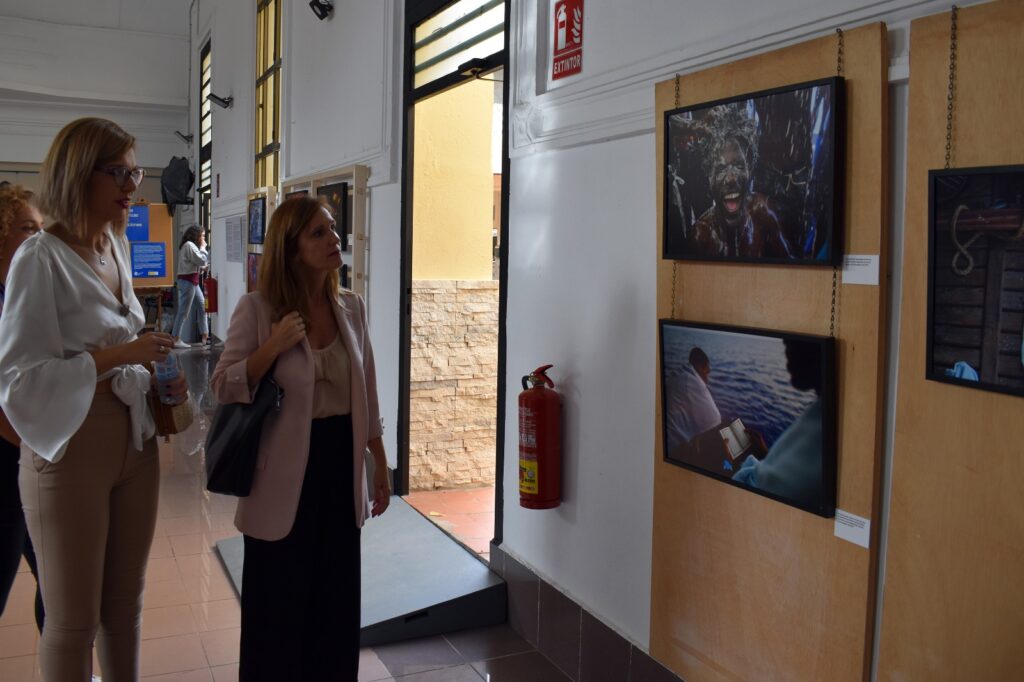With the attendance of the Government Delegate in Melilla, Sabrina Moh and the head of the Unit against Gender Violence, Laura S. Sarompas, the exhibition was inaugurated this morning at the Miguel Marmolejo School of Art.
The plundering of resources in southern countries by multinationals and states, the impact of climate change, the lack of prospects for a better present and future, together with multiple forms of violence and natural disasters force many people to leave their homes, in many cases against their will.
The impossibility of obtaining visas in the countries of origin or applying for asylum at border posts pushes them to move along dangerous and deadly sea routes. From 2014 to 2023, more than 55,900 people have disappeared during the migration process, with the Mediterranean being the deadliest route with more than 26,832 people missing.
With the exhibition Borderline views of migration, Médicos del Mundo España, through humanitarian photography, bears witness to human rights violations and denounces injustices in many corners of the world.
Three photographers, Juan Medina, Javier Fergo and Daniel Ochoa de Olza. Three stories to tell from the Mediterranean, Algeciras and Casablanca, and Tijuana
Life and death in the Mediterranean, by Juan Medina, tells the story of the rescue in 2018 of migrants fleeing Libya in flimsy boats crossing the Mediterranean Sea by the Spanish NGO Proactiva Open Arms. Josepha, a Cameroonian woman abandoned in a semi-sunken inflatable boat in the middle of the sea, was among those rescued. Thousands of people have lost their lives in recent decades, forced to migrate in this dangerous way because of laws restricting the movement of people and the lack of safe routes.
The last journey of Zohra Sarrouj, by Javier Fergo. Zohra was 27 years old when she decided to embark on a boat to reach Spanish soil. She left her six-year-old daughter with her family in her homeland, south of Casablanca. Hypothermia cut short his European dream in the Strait of Gibraltar. The photographs document her last journey from Algeciras, together with the funeral company in charge of her repatriation. It also tells the end of a story that is rarely shown: how family and friends receive the last return home of those who did not return alive to tell the tale.
Crossing the last border, in Tijuana, by Daniel Ochoa de Olza. At the end of 2018, a caravan of several thousand people set off from Honduras to reach the United States. Thousands of migrants from different countries joined along the way. Discouraged by the long wait to apply for asylum through the official ports of entry, many migrants opted to try to jump or cross the wall from Tijuana (Mexico). On the other side, in San Diego (California), the opposition of the US Border Patrol awaited them.
Borderline views of migration is an exhibition consisting of 29 photographs from winners and shortlisted entries in the Luis Valtueña Humanitarian Photography Prize.
Médicos del Mundo España’s work in Melilla
Médicos del Mundo has been working in Melilla since 2016. In recent years, its work has focused on improving people’s health and facilitating access to the National Health System for families, women and minors with and without family references, from an integral point of view. In other words, it facilitates health in all spheres, paying special attention to mental health to guarantee the wellbeing of the entire population, especially those who are particularly vulnerable.
The NGO also works in a network with local institutions and other organisations and social and health resources.





